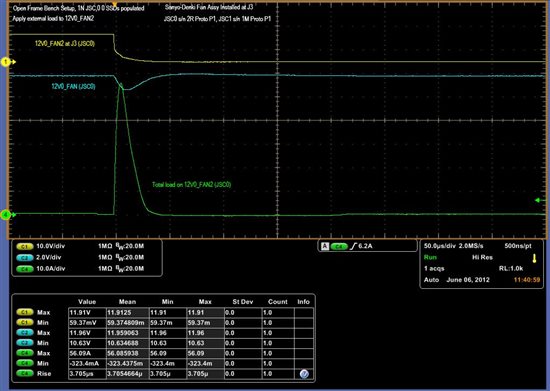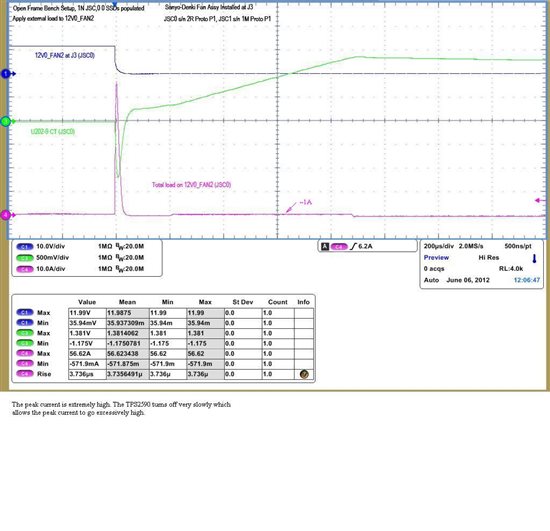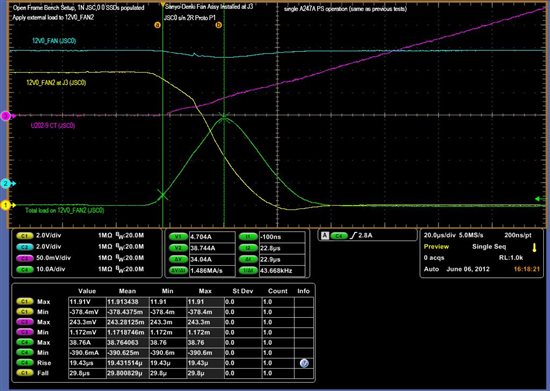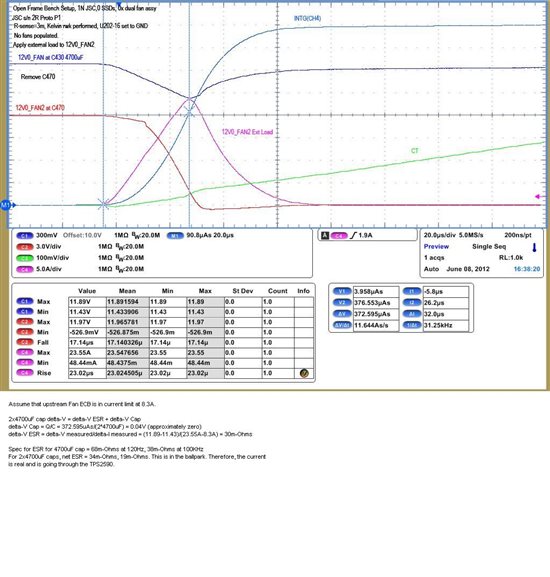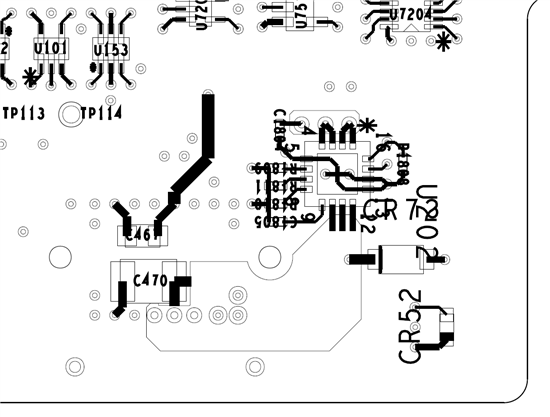When I apply an abrupt short to the output of the TPS2590 the device is very slow in turning off which results in very high currents. The current limit level is set to 3A nominal and the peak current under a hard short is 56A. The fall time of the 12V output is on the order of 30us. Does anyone know what could cause such a long turn off time? I would have expected a turn off time to be approximately 1us. How long can it take to turn off a fet?
-
Ask a related question
What is a related question?A related question is a question created from another question. When the related question is created, it will be automatically linked to the original question.


